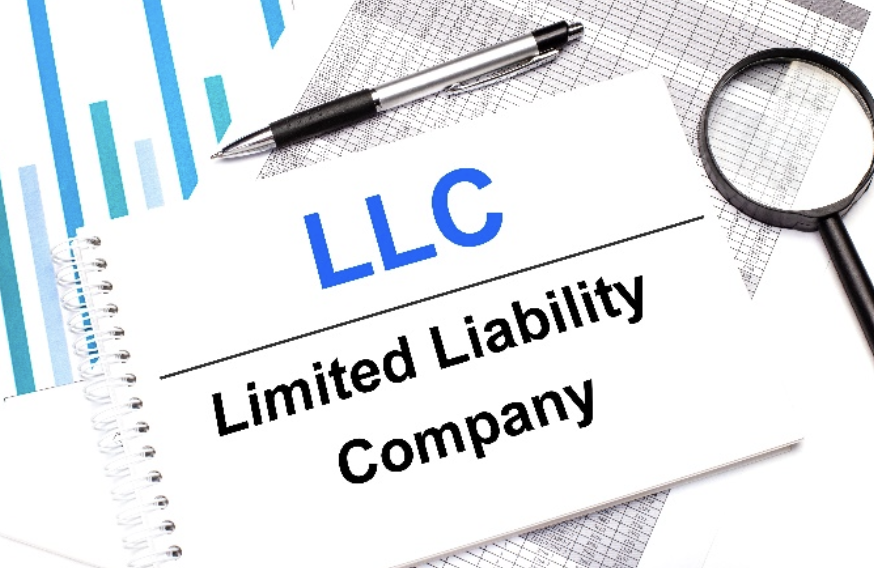Investment Structures
We build relationships

Real Estate partnerships are in reality relationships. Real estate development and construction is a constant flow of information and decision making. Although a lot of the anxiety and stress of a particular project is taken out by good upfront planning, the intrinsic joy of a successful project is not just sharing the profits with fellow investors but also sharing the satisfaction of a job well done. For this reason, investor suitability standards go deeper than just income and net worth.
Just like a good marriage it’s nature that make a relationship work, or in the case of real estate partnerships a group of people. How to form that partnership requires a look into each investor’s temperament and risk tolerance. Some people need to have the most security and safety possible in a real estate partnership. For these investors the limited partnerships would be the best option. For other investors, who have a desire for higher profits, and who have a higher risk tolerance, the joint venture, general partnership or a limited liability company may be the best structure for that relationship.
Making an informed choice of entity requires investors to work closely with their advisors to communicate their basic objectives and concerns for their real estate ventures and allow their advisors to describe the various alternatives available to them, the tax and non-tax consequences associated with each choice. Accordingly, any decisions regarding a choice of entity or any questions that arise from this description are those that should be discussed with a qualified tax and/or legal advisor.

While the types of entities available to conduct business in the United States are expansive, and vary depending on the state in which the entity is formed, the partnership structures most used by NBD investment development and construction projects are the:
 The state of California defines a general partnership as a “form of business entity in which two or more co-owners engage in business for profit.” [Corps. C. § 16202 (a)]. This definition highlights one of the more problematic aspects of the general partnership, which is that as long as the parties have Jointly agreed to carry on a business for profit, they may be considered to be general partners at law even if they have not specifically intended to be ‘general partners’, drafted a formal partnership agreement or reached an agreement on how to share profits or losses.
The state of California defines a general partnership as a “form of business entity in which two or more co-owners engage in business for profit.” [Corps. C. § 16202 (a)]. This definition highlights one of the more problematic aspects of the general partnership, which is that as long as the parties have Jointly agreed to carry on a business for profit, they may be considered to be general partners at law even if they have not specifically intended to be ‘general partners’, drafted a formal partnership agreement or reached an agreement on how to share profits or losses.
One of the most important aspects of the partnership form of entity is the relationship it creates between the partners. As a practical consideration then, it is paramount for investors in real estate to carefully consider the people that will serve as general partners in the partnership and determine whether or not their relationship is substantial enough and/or secure enough to risk the good deal of personal liability inherent in the general partnership structure. Further the risk of liability is exacerbated by the fact that generally each general partner is also deemed to be the agent of the partnership in dealings with third persons when acting in the ordinary course of business as defined by the courts, so that each partner may be further jointly and severally liable for liabilities to third parties incurred by a co-partner acting in the ordinary course of partnership business. [Corps. C. § 16301(b) (1) 1.6305, 16306].
 Many times, investors are confused by the difference between a “joint venture” and a general partnership. A joint venture typically takes the form of a general partnership, but one that has been formed for the specific purpose of completing a particular transaction, rather than one established for continuous business purposes. This distinction is important for investors in real estate to understand, as joint ventures are particularly effective as a means by which to partner with other existing investors and/or companies that may bring relevant skills or equity to the table to complete a project, without subjecting the partners to an ongoing relationship that may or may not make sense for all parties involved.
Many times, investors are confused by the difference between a “joint venture” and a general partnership. A joint venture typically takes the form of a general partnership, but one that has been formed for the specific purpose of completing a particular transaction, rather than one established for continuous business purposes. This distinction is important for investors in real estate to understand, as joint ventures are particularly effective as a means by which to partner with other existing investors and/or companies that may bring relevant skills or equity to the table to complete a project, without subjecting the partners to an ongoing relationship that may or may not make sense for all parties involved.
 Investors interested in the benefits and flexibility of the general partnership structure, but concerned about the inherent personal liability may want to consider a similar form of entity, referred to as a “limited partnership”. The limited partnership has many of the same features as the general partnership, but is comprised of one or more ‘general’ partners, who have all the same rights and liabilities as they would as members of a general partnership, and one or more ‘limited ‘partners. The limited partners’ responsibilities to the limited partnership are merely the contribution of capital; limited partners have no management rights or responsibilities and accordingly, cannot be held liable for any of the partnership obligations in excess of their capital contributions. [Corps. C. § 15611].
Investors interested in the benefits and flexibility of the general partnership structure, but concerned about the inherent personal liability may want to consider a similar form of entity, referred to as a “limited partnership”. The limited partnership has many of the same features as the general partnership, but is comprised of one or more ‘general’ partners, who have all the same rights and liabilities as they would as members of a general partnership, and one or more ‘limited ‘partners. The limited partners’ responsibilities to the limited partnership are merely the contribution of capital; limited partners have no management rights or responsibilities and accordingly, cannot be held liable for any of the partnership obligations in excess of their capital contributions. [Corps. C. § 15611].
The limited partnership entity is typically the best partnership vehicle for passive investors in real estate, as it allows them to invest in the enterprise and share in their allocation of profits if the project is a success, but their status as limited partners typically preclude them from incurring liabilities in excess of their initial capital contributions.
 Many investors are already acquainted with the Limited Liability Company or “LLC”, as it has quickly become one of the most popular entities in which to do business in many states. An LLC is most simply described as a sort of hybrid between a partnership and a corporation that combines the “pass-through” tax attributes of partnerships with the limited liability available to corporate shareholders [Corps. C. § 17000]
Many investors are already acquainted with the Limited Liability Company or “LLC”, as it has quickly become one of the most popular entities in which to do business in many states. An LLC is most simply described as a sort of hybrid between a partnership and a corporation that combines the “pass-through” tax attributes of partnerships with the limited liability available to corporate shareholders [Corps. C. § 17000]
The existence of a California LLC begins upon the filing of “articles of organization” with the Secretary of State on the prescribed form. [Corps. C. § 17505] The articles of organization will require the new member/members of the LLC to designate of a qualified initial agent for service of process and submit a statement indicating whether the LLC will be managed by one manager, more than one manager; or the member/members. [Corps. C. § 17051, 17151]
 Unlike the certificate of formation required for partnerships, the articles of organization required for an LLC do not require disclosure of the member(s) and/or manager(s) name(s) or their respective initial capital contributions. The requirements for valid articles of organization are similar to a certificate of formation in that the members do not have to codify their agreement in writing; while the regulations do require that an operating agreement be entered into by the members either before or after filing the articles, they do not specify that the agreement be in writing [Corps. C. § § 17001(b), 1705Q(a)]
Unlike the certificate of formation required for partnerships, the articles of organization required for an LLC do not require disclosure of the member(s) and/or manager(s) name(s) or their respective initial capital contributions. The requirements for valid articles of organization are similar to a certificate of formation in that the members do not have to codify their agreement in writing; while the regulations do require that an operating agreement be entered into by the members either before or after filing the articles, they do not specify that the agreement be in writing [Corps. C. § § 17001(b), 1705Q(a)]
One of the major benefits of electing to do business as an LLC is the lack of formal requirements to validly transfer membership interests. While typically no new members may be added by issuance of new membership interests or transfer of existing interests without the consent of members having a majority in interest (excluding the vote of the person acquiring the membership interest), this is typically a much lighter burden than the restrictions on transfer posed by other business forms. [Corps. C. § 17100(a)(1), 17303(a)]
 Of all the various forms of business entities, investors are typically best acquainted with the “corporation” but are unsure as to what specifics are required under the form and how those requirements will affect the ability their ability to operate a business whose primary aim is investment in real estate. Like the other forms of business entities, corporations are deemed to be legal entities separate and distinct from the person(s) who created it and from the shareholders who own it.
Of all the various forms of business entities, investors are typically best acquainted with the “corporation” but are unsure as to what specifics are required under the form and how those requirements will affect the ability their ability to operate a business whose primary aim is investment in real estate. Like the other forms of business entities, corporations are deemed to be legal entities separate and distinct from the person(s) who created it and from the shareholders who own it.
As distinct entities, corporations have the power to act on their own behalf in any way permitted by the law and/or its chartering documents, including the ability to contract, to own and convey property, maintain civil causes of action, and may be accused of both civil and criminal wrongdoing in its own name. Like the other forms of business entities, there are certain steps required to validly form a corporation in the state of California; formation in the state require substantial compliance with the General Corporation Law, which list of number of basic requirements including filing of articles of incorporation containing certain essential provisions, prepayment of certain fees, etc.
It is worth repeating that investors should understand that in most situations, there is no one “right answer” to the question of which entity will best serve their interest, and that it should be understood that the “choice of entity” process itself really is the process of distilling the investors down to their most basic level, and then comes to finding an entity that overall meets as many objectives as possible, and the sound advice of tax and legal counsel is paramount to making an informed decision. EXETER – The Exeter Group of Companies (1031 Exchange Services Group)